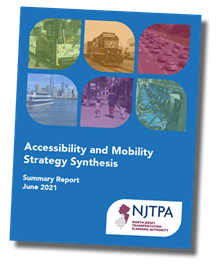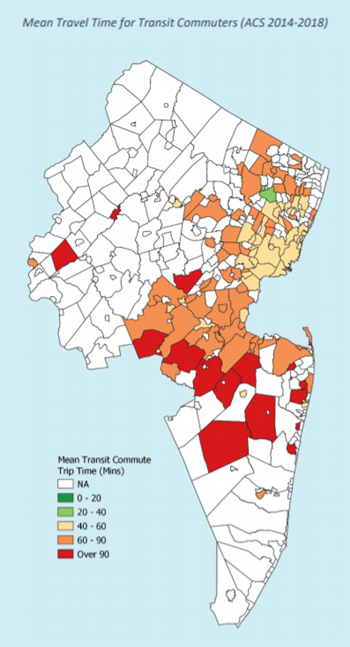 The NJTPA recently completed the Accessibility and Mobility Strategy Synthesis study, which provides a detailed assessment of the region’s varied transportation needs–including equity considerations–and identifies potential strategies for improvements. The study is an update to the region’s federally mandated Congestion Management Process (CMP).
The NJTPA recently completed the Accessibility and Mobility Strategy Synthesis study, which provides a detailed assessment of the region’s varied transportation needs–including equity considerations–and identifies potential strategies for improvements. The study is an update to the region’s federally mandated Congestion Management Process (CMP).
The study focused on accessibility, which refers to travelers reaching desired destinations within a reasonable time and cost; and mobility, which addresses the movement of people and goods on the transportation network and how well that system provides safe, reliable, and efficient travel.
Some needs identified in the study are shared across the region, such as addressing roadway reliability, improving bicycle and pedestrian safety and infrastructure, and alleviating congestion on freight corridors. Other needs are more tied to geography–varying according to housing, commuting and other features in urban, suburban, and rural areas.
From an equity standpoint, the study highlights issues such as access to private vehicles and concentrations of minority populations far from some suburban job centers.
A series of technical reports provide more detailed information related to each step of the study process:
 Objectives and Performance Measures—Identifies three overarching objectives—improving accessibility to destinations, ensuring equitable access for all and enhancing travel reliability for all modes—as well as supporting objectives and performance measures.
Objectives and Performance Measures—Identifies three overarching objectives—improving accessibility to destinations, ensuring equitable access for all and enhancing travel reliability for all modes—as well as supporting objectives and performance measures.
Needs Assessment—Includes maps, tables, and descriptions of identified needs. While “needs” generally reflect performance gaps or problems identified by regional stakeholders, they may also be characterized as “opportunities” for improvement.
Equity Assessment—Explores mobility and accessibility outcomes for different socio-demographic groups in the 13-county NJTPA region. These include both environmental justice (minority and/or low-income) populations and other groups (e.g., seniors, persons with disabilities, limited English proficiency). A Transportation Equity Survey was also conducted to gather stakeholder perspectives.
Strategy Identification and Prioritization—Identifies a menu of possible strategies organized under eight categories. The document describes recommended steps for prioritizing strategies, matching needs to strategies and implementing them. It includes a matrix to help partner organizations identify possible strategies to address specific types of needs.
Findings in these reports are highlighted in a Summary Report. A CMP Strategy Profiles companion document provides a resource for partner agencies to support strategy implementation. This includes an array of effective and economical strategies for planners, engineers, and elected officials to consider as they seek solutions for local transportation challenges.
The reports are available at on the study webpage. Information on Congestion Management can be found on the CMP page.